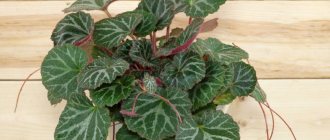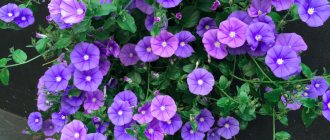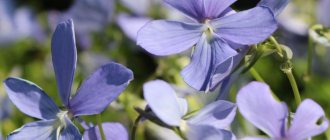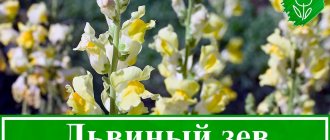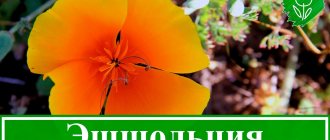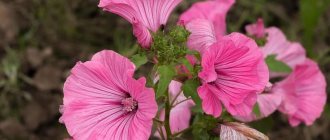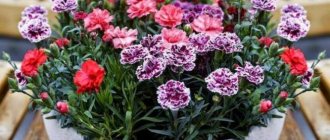Chilean quellyon (Geum quellyon) is a herbaceous perennial from the Rosaceae family. Its other name is Greek rose. The birthplace of the flowering plant is Chile, South America. Thanks to its lush greenery, lush buds and long flowering period, it is popular with gardeners from all over the world. Planting and caring for Chilean gravilat is not particularly difficult. If you follow simple rules of agricultural technology, the plant feels great in a temperate climate.
Comment! In addition to its decorative qualities, Geum quellyon has healing properties. Since ancient times, it has been used by healers in Chile to treat inflammation and tumors.
General description of the species
Chilean gravilate is a magnificent garden flower with lush buds, serving as a genuine decoration for landscaped areas. The perennial belongs to medium-sized plants, reaches a height of 40 to 60 cm. The leaves are large, round-toothed, emerald green or grayish-swampy in color. Velvety-pubescent above and below. They are located in a rosette at the very roots, on short cuttings.
The root is powerful, creeping, slightly branched. A long straight stem rises from it, pubescent with a short soft thief, tetrahedral. Slightly branching, with small serrated leaves at the base of the shoots. The color can be green, reddish-brown, burgundy. At the ends, flower buds are formed, collected into inflorescences, a panicle or an umbrella of 3-5 pieces.
The flowers of Chilean gravilata are large, up to 3-4 cm in diameter. Depending on the variety, they can be ordinary, with five petals, or lush, terry. The shape resembles a wild rose hip. They have bright scarlet, burgundy, crimson, yellow, orange, soft cream or pink color. Petals with a figured-wavy outer edge, with stamens of a yellowish-greenish color. It begins to bloom at the end of June and continues for 50-60 days. Some species delight with lush flowering throughout the summer. The fruit is a nut with hooks.
Umbrella hornbill (Butomus umbellatus)
A very elegant plant for decorating ponds, capable of emphasizing both the strict regular style of the composition with its sword-shaped, long leaves, and naturally fitting into the company of aquatic plants of a pond in a landscape style. The height of the stems of susak is 40-10 cm, the flowers are pink and white, collected in umbrellas, bloom in June-July.
Features of cultivation
Susak can be planted in a container in shallow water (from 10 cm to 1 m). Prefers clay soil. Grows quickly; divided every 2-3 years. Distribution control required.
This is interesting
The Latin name for susak - Butomus - comes from the Greek words bus - bull, tomnein - to pinch off and speaks of susak as a fodder plant for cattle. On the site, see more material about umbrella susak here.
Popular varieties
Since 1824, when the Chilean grasshopper began to be cultivated, several dozen ornamental varieties have been bred. They all have their own characteristics and also have an incredibly attractive appearance. Gardeners can only choose the most suitable plants for their site and climate zone.
Important! Chilean gravilate is an excellent honey plant.
Gravilate Fireball
Gravilat Chilean Fireball is a medium-sized species, with a height of 50 to 60 cm. The flowers are bright red, lush, double. The diameter is 3-4 cm. The leaves are collected in a rosette near the ground, and the stem branches strongly, producing many flower stalks. The variety tolerates partial shade and short-term summer droughts well, and is winter-hardy.
Spectacular flowering of Chilean gravilata "Fireball" lasts more than 50 days
Chilean gravilat Moon Valley
Amazingly beautiful view with bright lemon or golden petals. Double or semi-double flowers have a diameter of 3-4 cm. Loves sunny places and regular watering. Pairs perfectly with red carnations and blue bells.
Gravilat "Moon Valley" has a straight stem up to 60 cm high and feathery, lyre-shaped leaves
Chilean Gravilat Lady Stratheden
The plant of the Lady Stratheden variety is 50-60 cm in height, flowering time is June-August. The variety is distinguished by its golden-lemon color of the petals. The flowers are large, from 3 to 4 cm in diameter, lush. It is unpretentious in care, while the flowering is bright and friendly.
The Lady Stratheden variety loves mineral-rich soils
Chilean Gravilat Gold Ball
The stems of the perennial Gold Ball reach a height of 60 cm. Bright yellow, elegantly sunny flowers delight with their appearance from May to August. The odd-pinnate leaves are concentrated in the basal part of the stem and have a rich green color. Frost-resistant variety, perfectly withstands harsh winters in the northern and mountainous regions.
"Goldball" is one of the most preferred hybrids for the Russian climate
Chilean gravilate Mrs Bradshaw
Gravilat Chilean Mrs j Bradshaw is distinguished by large, double flowers of a rich, scarlet-orange, almost scarlet color. Their diameter reaches 4 cm. The flowering period is July-August. Gravilat Chilean Mrs. Bradshaw is a winter-hardy variety that does not require shelter for the winter and tolerates low temperatures well.
The Mrs. Bradshaw variety is one of the tallest, reaching 80 cm
Chilean Gravilat Blazing Sunset
A spectacular, profusely flowering species of Blazing Sunset with bright red, white or crimson lush inflorescences. The height of the plant is 60 cm, the diameter of the flowers is 3 cm. The flowering period is from June to August. Winters well without additional shelter. Responds gratefully to fertilizing with wood ash.
The variety can grow both in open sunny places and in partial shade.
Chilean gravilate Rigoletto
Rigoletto bushes are medium-sized, growing up to 60 cm. The variety is distinguished by large, bright red terry buds. The petals are rounded-wavy, the core is dark or green-brown, with rich yellow stamens.
Chilean gravilate "Rigoletto" is one of the most popular varieties
Chilean Gravilat Mai Tai
The Geum hybride Mai Tai variety is medium-sized, from 40 to 50 cm. It has openwork carved malachite leaves. Single flowers are lush, double, pink-cream or orange.
Gravilat "Mai Tai" looks great next to other flowering plants, vines, mosses
Aurelia
Aurelia is a very beautiful variety with large double buds of a golden hue. Bushes up to 60 cm high, straight or slightly bent under the weight of the inflorescences. Flowering begins in June.
Amazingly beautiful, sunny flowers give a great mood throughout most of the summer
How many names does he have?
In science, river gravity is usually called in Latin - Geum rivale. But the Russian name of this plant is associated with another type of flower - urban gravilat, or rather with its fragrant rhizomes. Because of their very clove-like smell, domestic pharmacists used them to give a more pleasant taste to the prepared medicines and potions. And such roots were much cheaper than those imported from abroad. For the sake of respectability, pharmacists of that time called the dried roots in Latin - radix caryophyllatae, which translated into Russian means “clove root”. Over time, the name shortened and became simpler - “caryophyllate”, and later began to sound like “graphilate”. As a result, in Russian botanical nomenclature this particular name was assigned to this plant.
The Russian people came up with many names for river and city gravilates, emphasizing certain features of the flower. In various Russian regions it is called clove grass, snake root, ozhinnik, undergrowth, comb grass, nutcracker, Benedict grass and many other names.
Application in landscape design
Chilean gravilate is widely used to decorate home areas, organize flower beds in city parks, along roads and in squares. The perennial looks great in rockeries. It is planted on alpine slides, ridges and mixborders. One of the most successful options for flowering plantings in alleys, front gardens and green lawns. They are framed by natural and artificial reservoirs - ponds, streams, rivers, pools.
The flower is beautiful in individual compositions. With the proper selection of several varieties, you can organize continuous flowering from May to September. The most successful combinations are with carnations, bells, phlox, and peonies. Chilean gravilate is beautiful in landscape design, as can be seen in the photo.
Chilean Gravilat goes well with most ornamental plants
Accommodation at the dacha
Gravilata, photo from foragefor.blogspot.com Throughout the growing season, Gravilata attracts attention with its beautifully cut leaves, and with the onset of sustained warmth they explode with bright fireworks of floral colors. They will feel great in the marsh and coastal wet zone of a reservoir, and dwarf varieties can become a seasonal decoration for a lawn, ridge, or flower bed; mountainous city and creeping city - rockery.
Features of reproduction
Chilean gravilate can be propagated by seeds, which are collected in the fall, when they are finally ripe. They can be planted in spring or late summer.
The second method is to divide the bush, but no more than four times a season. Overgrown bushes should be carefully dug up and the rosettes with part of the roots should be separated. All parts must be planted immediately in a permanent place, maintaining distance.
Advice! Until the bushes take root, it is better to water them daily in dry weather without flooding the plants.
Medicinal properties
Gravilat Chilean includes:
- tannins - compounds with an astringent effect that help in the treatment of gastrointestinal pathologies and stopping bleeding;
- essential oil is a substance with a strong odor and taste that has an antibacterial and therapeutic effect;
- flavonoids – compounds similar to female sex hormones;
- alkaloids – substances that have an analgesic, anti-inflammatory effect;
- phenolcarboxylic acids - compounds that have choleretic, antibacterial and tuberculostatic (an agent for fighting tuberculosis) effects;
- vitamins and minerals.
Due to the high content of useful substances, the plant has the following medicinal properties:
- stops bleeding;
- relieves pain;
- restores tissues and cells;
- calms;
- helps the functioning of the gastrointestinal tract;
- destroys bacteria and parasites;
- strengthens the body.
Urban gravilate root has an anti-inflammatory effect, helps normalize vascular permeability, reduce swelling, due to the presence of catechins in the composition
Growing Chilean Gravilata seedlings
Growing all types of gravilate, including “Fireball”, from seeds has its own specifics. Sown in March, in the southern regions - in February. They should first be kept at a temperature of 2-5 degrees and soaked, thus increasing the percentage of germination. A solution of Epin or another biostimulant is perfect for soaking.
Nutritious light soil with a neutral or slightly alkaline reaction (can be purchased ready-made at a specialty store or prepared from turf soil, peat, sand and humus with the addition of wood ash) placed in boxes. Draw furrows or make depressions of 2-3 cm, lay out the swollen seeds. Sprinkle with soil, cover with glass or film. Watering should be done as needed. When three true leaves appear, plant the seedlings in separate pots.
If the area where you plan to plant the Chilean Gravilat is low, then the beds must be raised by at least 0.5 m, and good drainage must be ensured. The perennial does not like stagnant water and swampy, heavy clay soils.
Selecting a landing site
These plants look best at the edges of flower beds or borders. It is best to have a few more bushes of such a plant growing close to the crop, in this case it will look more attractive. Gravilat can be planted almost everywhere:
- On Moorish (flowering) lawns. This planting will look like a bright meadow. Such a lawn can be created next to the entrance to the house or next to tree plantings.
- On discounts. Such crops have become a major part in the creation of landscape compositions. They can be planted on paths or as special fences. It is best for the discount to include several rows. Most often, alternating rows of carpet, bulbous and deciduous ornamental crops, as well as perennials, are used for them.
- In mixborders. Such flower beds are created on the principle of continuous flowering. Among the large number of multi-colored plants, gravilat occupies a leading position. Growing such a plant from seeds is quite simple. When creating such a composition, problems usually arise with bulbous flowers, due to the fact that they need to be allocated more free space for growth and development.
Features and description of roses Pierre de Ronsard
In order for the gravilate to grow beautiful and strong, and not be subject to diseases, it is important for it to choose the right place for permanent growth. https://www.youtube.com/embed/QKMnxjbFqeA
To plant a crop, it is important to choose an area with a high level of illumination, which will receive sunlight. The plant can also grow in the shade, but its growth will be too slow, and the flowering will not be decorative.
When growing gravilat from seeds (fireball), it is best to use soils with low acidity. It is best to fertilize the soil in advance with a mixture of charcoal, coarse sand, and deciduous soil. There is no need to plant the plant in soil that is too moist. It would be best to add a little soil and thereby raise the flowerbed.
Planting and caring for Chilean gravel in open ground
Chilean gravilate is an unpretentious plant. It does not require the owners of the plot to have special skills or careful attention to each bush. This is why the perennial is so loved by gardeners. By following the rules of planting and care, you can achieve an impressive result in one season. Planting on the site and caring for the Fireball gravitational plant is not so difficult.
The combination of wild stone, bright scarlet Chilean gravilate and soft blue anagallis is mesmerizing to look at.
Landing dates and rules
Chilean gravilat seeds are sown in the ground in early spring, as soon as the soil warms up a little. The bed prepared in the fall is additionally leveled and loosened, you can add ash or slaked lime, well-rotted humus. Then you need to moisten the soil and make furrows at a distance of 15-25 cm from each other. Plant the seeds and level the surface. Watering is done as needed. As soon as the seedlings appear, they are thinned out, leaving the strongest specimens.
Seedlings are planted in a permanent location in May, as soon as the threat of frost has passed. 2 weeks before planting, the plants must be taken outside and hardened off. Deep enough holes are made in the soil to allow a ball of earth to be placed. It is better if the plants are planted in individual peat cups - this way they will take root more successfully. Chilean Gravilat in a flowerbed looks amazing not only in the photo.
A bright, elegant carpet of lush buds - this is exactly what a plot with Chilean gravilata looks like
Watering and fertilizing schedule
Before planting seedlings or seeds, fertilizers should be added to the soil:
- vermicompost, humus, compost, peat, wood ash;
- mineral complexes sold in the store, in accordance with the specified standards.
In the future, once a year, plantings can be fed with infusion of ash, diluted manure or universal fertilizer. If the soil is depleted, then fertilizing is done twice - at the beginning of the growing season and during flowering.
Watering should be moderate, except during the summer drought. Adult bushes should be watered 1-2 times a week.
Advice! Chilean Gravilat grows well in one place for 5 years, so there is no need for transplants.
Loosening
After watering, the Chilean gravel must be loosened, simultaneously removing weeds and perennial roots. Then add mulch - sawdust, chopped bark, chopped straw or peat.
Trimming
In order for the Chilean gravilate to delight you with its beautiful flowers for as long as possible, the faded buds must be removed immediately. Cut off withered leaves and dead sections of stems.
Wintering
Typically, Chilean gravilat does not need special preparation for winter. It is quite resistant to frost, and in the presence of high snow cover, it perfectly tolerates the most severe cold. Terry, highly decorative varieties can be closed for the winter; shelter is also required in the absence of snow. Dry fallen leaves, chopped straw, and spruce branches will do.
Important! Chilean Gravilat seeds can be sown in October, when persistently cold weather sets in. This planting method is preferable because the seed undergoes natural stratification and germinates more uniformly.
Landing nuances
At your dacha you should find a well-lit area that is heated by the sun for more than 8-10 hours a day. These are heat-loving crops and do not tolerate heavy shade. The basic principles of planting gravel and caring for it (photos and descriptions of varieties are given below) include the following:
- Properly selected soil. Wet areas must be dried using special methods. Some people recommend making a mounded bed or buying varieties that like moisture. In the hole, it is necessary to make drainage from stones or expanded clay. When digging the area, the soil should be mixed with sand.
- Distance between bushes. It should be between 15 and 20 cm so that the leafy rosette can develop freely.
- Maximum distance of roots from groundwater. In overly moist soil, the root system begins to rot, and gray mold also appears.
Diseases and pests generally do not affect this member of the Rosaceae family. Moreover, the bushes are very easy to propagate in your garden. It is enough to sow the seeds in a container in the spring (March), and in the last days of April, transplant the seedlings into open ground. It is worth considering that the threat of frost still remains, so the sprouts need to be covered. For these purposes they use
- agrofibre;
- film;
However, the young growth will only shed color the next year. The second method of propagation is dividing the bushes. In spring or early autumn, you need to dig up the bush and carefully divide it into two parts. Before planting, pour water into the hole to prevent the roots from wilting.
If necessary, it is important to reduce the acidity of the soil. To do this, add several parts of wood ash to it.
Diseases and pests
Chilean Gravilate is resistant to most diseases of garden flowers. But improper care of plants can provoke the development of diseases. Excessive watering, rainy summers, waterlogged soils and dense plantings negatively affect the health of the bushes. If root rot occurs, the affected specimens must be uprooted, and the remaining ones must be urgently treated with fungicides.
During drought, if watering is infrequent, the perennial may be affected by spider mites. It is necessary to treat with any specialized insecticide and provide moisture.
